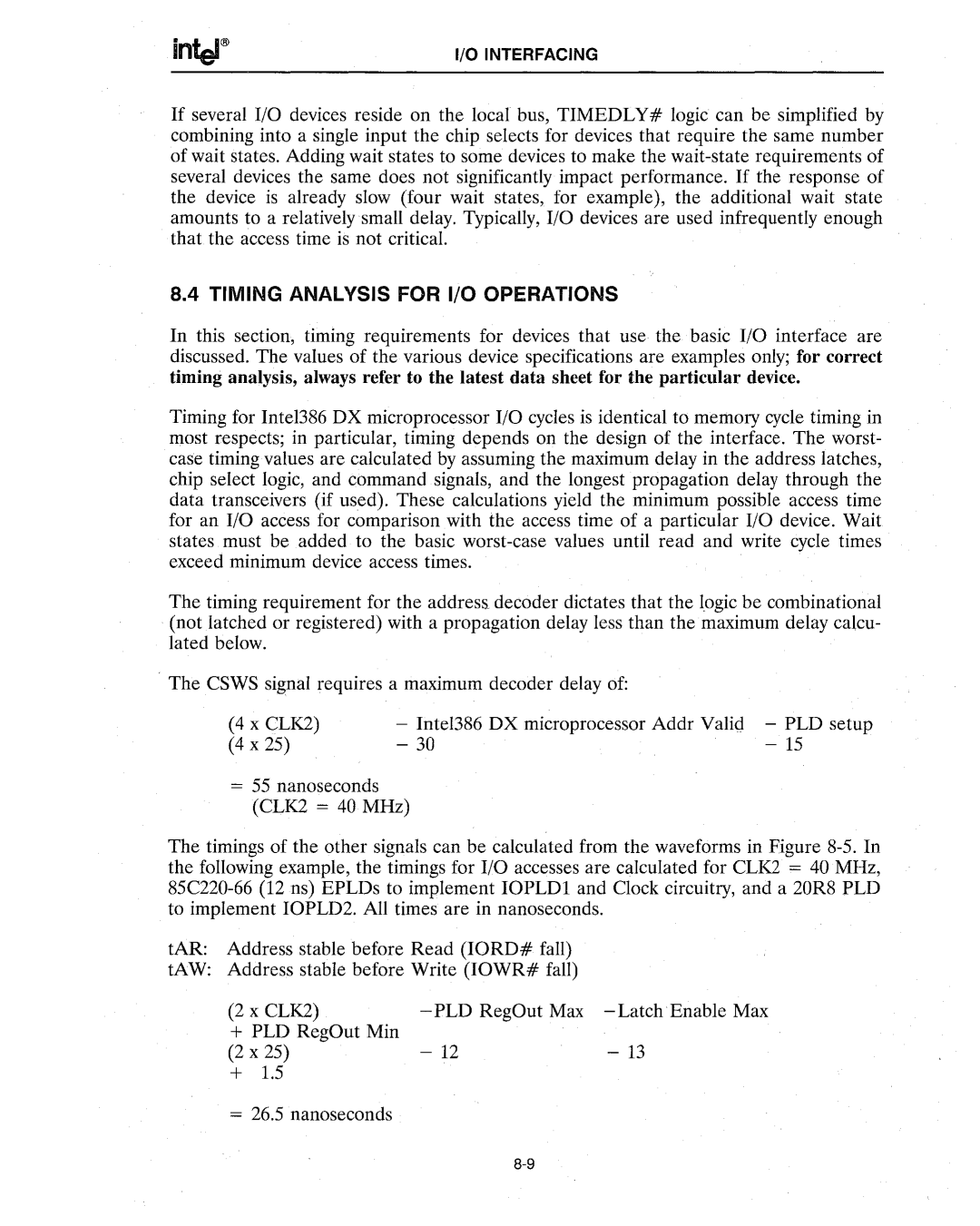
I/O INTERFACING
If several I/O devices reside on the local bus, TIMEDLY# logic can be simplified by combining into a single input the chip selects for devices that require the same number of wait states. Adding wait states to some devices to make the
8.4 TIMING ANALYSIS FOR I/O OPERATIONS
In this section, timing requirements for devices that use the basic I/O interface are discussed. The values of the various device specifications are examples only; for correct timing analysis, always refer to the latest data sheet for the particular device.
Timing for Inte1386 DX microprocessor I/O cycles is identical to memory cycle timing in most respects; in particular, timing depends on the design of the interface. The worst- case timing values are calculated by assuming the maximum delay in the address latches, chip select logic, and command signals, and the longest propagation delay through the data transceivers (if used). These calculations yield the minimum possible access time for an I/O access for comparison with the access time of a particular I/O device. Wait states must be added to the basic
The timing requirement for the address decoder dictates that the logic be combinational (not latched or registered) with a propagation delay less than the maximum delay calcu- lated below.
. The CSWS signal requires a maximum decoder delay of:
(4 x CLK2) | - | Intel386 DX microprocessor Addr Valid | - | PLD setup |
(4 x 25) | - | 30 | - | 15 |
=55 nanoseconds (CLK2 = 40 MHz)
The timings of the other signals can be calculated from the waveforms in Figure
tAR: Address stable before Read (IORD# fall)
tAW: Address stable before Write (IOWR# fall)
(2 x CLK2) | - PLD RegOut Max - Latch Enable Max |
+PLD RegOut Min
(2 x 25) | - 12 | - 13 |
+1.5
26.5nanoseconds
